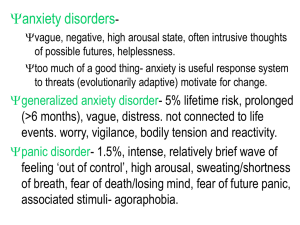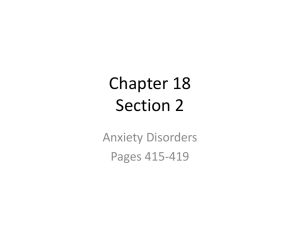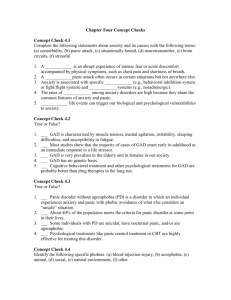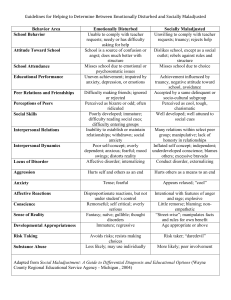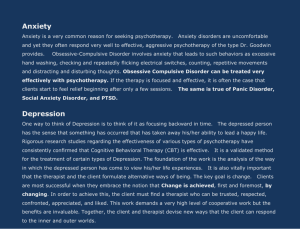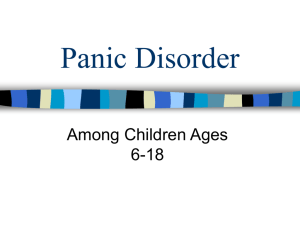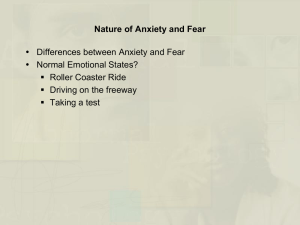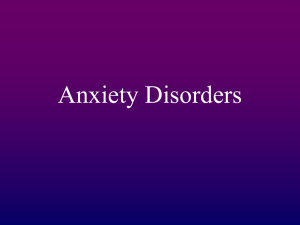Anxiety Disorders
advertisement
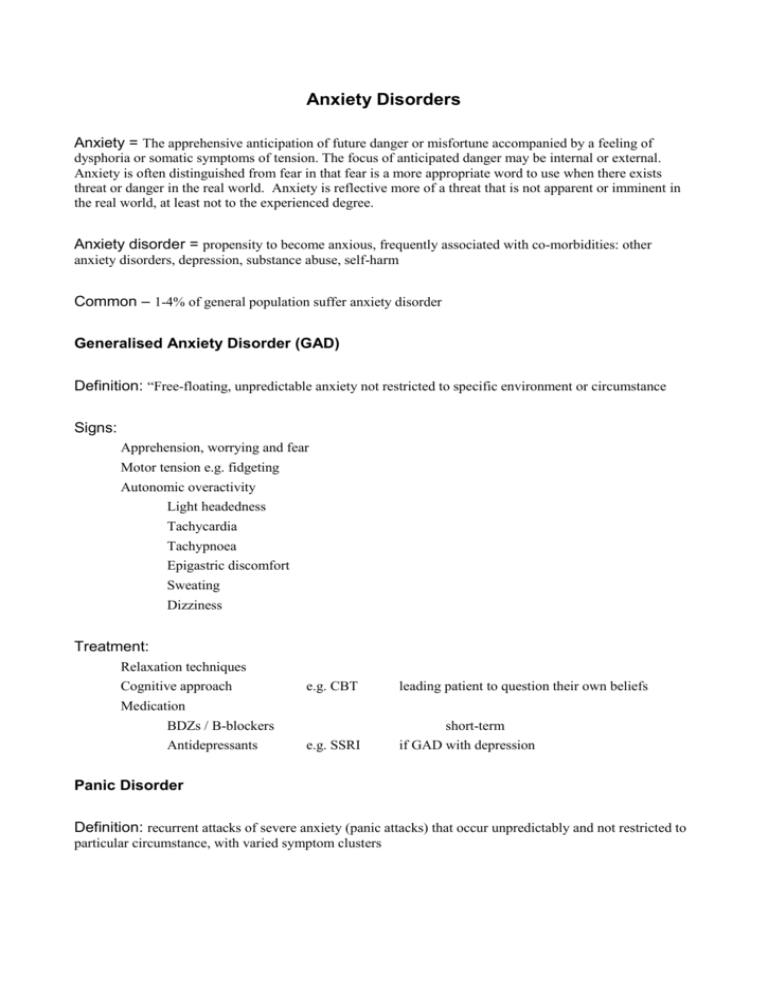
Anxiety Disorders Anxiety = The apprehensive anticipation of future danger or misfortune accompanied by a feeling of dysphoria or somatic symptoms of tension. The focus of anticipated danger may be internal or external. Anxiety is often distinguished from fear in that fear is a more appropriate word to use when there exists threat or danger in the real world. Anxiety is reflective more of a threat that is not apparent or imminent in the real world, at least not to the experienced degree. Anxiety disorder = propensity to become anxious, frequently associated with co-morbidities: other anxiety disorders, depression, substance abuse, self-harm Common – 1-4% of general population suffer anxiety disorder Generalised Anxiety Disorder (GAD) Definition: “Free-floating, unpredictable anxiety not restricted to specific environment or circumstance Signs: Apprehension, worrying and fear Motor tension e.g. fidgeting Autonomic overactivity Light headedness Tachycardia Tachypnoea Epigastric discomfort Sweating Dizziness Treatment: Relaxation techniques Cognitive approach e.g. CBT Medication BDZs / B-blockers Antidepressants leading patient to question their own beliefs short-term e.g. SSRI if GAD with depression Panic Disorder Definition: recurrent attacks of severe anxiety (panic attacks) that occur unpredictably and not restricted to particular circumstance, with varied symptom clusters Panic attack: sudden crescendo of anxiety and fear that builds up to the point that the patient escapes from the situation they are in. They may experience feelings of impending doom (fear of death), fear of collapse, fear of loss of control, fear of going mad, depersonalisationi, derealisationii plus somatic effects including: SOB Tremor Sweating Tachycardia Tachypnoea Palpitations Numbness Defaecation N+V Differential diagnoses (organic) Hyperthyroidism Hyerparathyroidism Phaechromocytoma Hypoglycaemia (causes sympathetic arousal) Cardiac arrhythmias Asthma Treatment CBT – 7-14 hours Support groups Medications: SSRI – low dose initially with regular review Phobias “A persistent, irrational fear of a specific object, activity, or situation (the phobic stimulus) that results in a compelling desire to avoid it. This often leads either to avoidance of the phobic stimulus or to enduring it with dread” Signs: blushing, sweating, tremor, speech block, can progress to panic attack Social – fear of scrutiny by others, usually in small groups when performing an act Agoraphobia – “fear of marketplace” – fear of crowded places, enclosed spaces, open areas where escape is difficult. Commonly associated with panic disorder Specific phobias – usually start in first decade of life e.g. arachnaphobia Treatment Exposure not avoidance! Flooding forced significant exposure Grading increase exposure in steps – each step should be realistic and attainable SSRI Obsessive Compulsive Disorder Definition (diagnosis according to ICD-10 criteria, but broadly:) Obsession – thought – repetitive,distressing, irrational idea, image or impulse Compulsion – response – to obsession, repetitive, not enjoyable, seen to be preventative …resulting in functional impairment or distress Treatment CBT SSRI Post Traumatic Stress Disorder (PTSD) Uncommon Definition: Delayed or protracted response to catastrophic situation resulting in: Flashbacks Numbness Startal reactions Treatment Exposure, Rehearsal EMDR – eye movement desensiisation reprogramming – talk through event whilst concentrating on finger being moved in front of face – high success rate (Reliving events doesn’t help) i ii Feeling of detachment from one’s one thoughts i.e. as if one is living a dream perception that the outside world isn’t real
